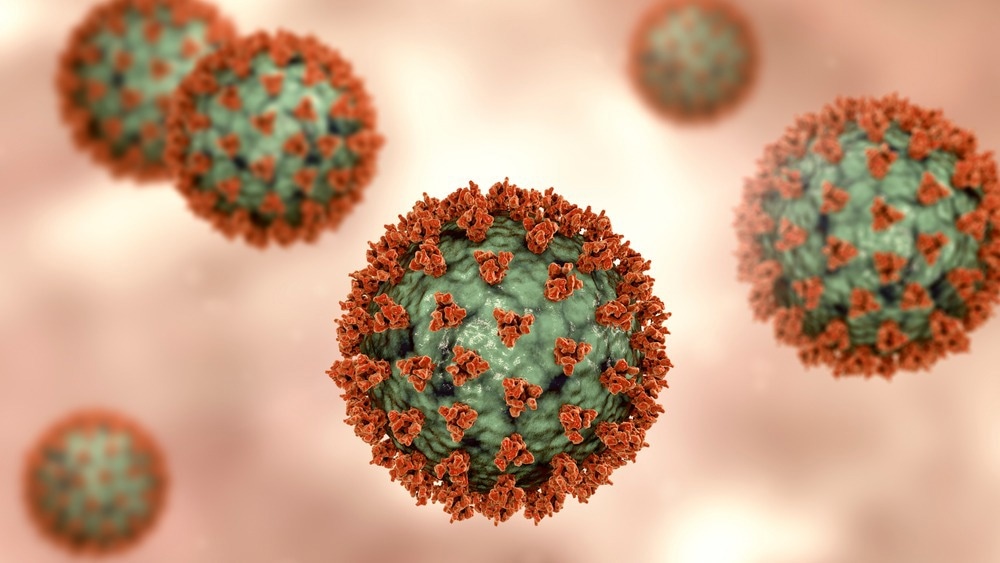In a recent study posted to the bioRxiv* preprint server, researchers assessed the association of enhanced migratory or activated CD8+ T cell and reduced avidity reactive cellular response due to post-acute coronavirus disease 2019 (COVID-19) syndrome (PASC).
 Study: Increased migratory/activated CD8+ T cell and low avidity SARS-CoV-2 reactive cellular response in post-acute COVID-19 syndrome. Image Credit: Kateryna Kon/Shutterstock
Study: Increased migratory/activated CD8+ T cell and low avidity SARS-CoV-2 reactive cellular response in post-acute COVID-19 syndrome. Image Credit: Kateryna Kon/Shutterstock

 *Important notice: bioRxiv publishes preliminary scientific reports that are not peer-reviewed and, therefore, should not be regarded as conclusive, guide clinical practice/health-related behavior, or treated as established information.
*Important notice: bioRxiv publishes preliminary scientific reports that are not peer-reviewed and, therefore, should not be regarded as conclusive, guide clinical practice/health-related behavior, or treated as established information.
Background
Post-infectious Myalgic Encephalomyelitis/Chronic Fatigue Syndrome (ME/CFS) is sufficiently documented as a consequence of a number of illnesses, predominantly viral infections such as COVID-19. PASC manifests as a chronic multisystemic disease with several respiratory, cardiovascular, gastrointestinal, and neurological characteristics.
Emerging epidemiologic research highlights concentration difficulties, post-traumatic stress disorder (PTSD), as well as sleep disorders among psychiatric or neurological complications post-COVID-19. However, there is currently no data on the immunological pathogenesis of PASC that affects a considerable fraction of the general population.
About the study
The present study investigated the immunological response in 40 COVID-19 patients with non-specific PASC and 15 healthy COVID-19 convalescent donors.
The team utilized peripheral blood mononuclear cells (PBMCs) and serological samples obtained from 40 convalescent COVID-19 patients diagnosed with PASC and 15 convalescent patients who did not exhibit any PASC symptoms. Cognitive, psychiatric impairment, or symptomatic characteristics were predicated on psychiatrically pertinent ICD 10 diagnosis. Characterization of activation or migration status of T cells, assessment of SARS-CoV-2 reactive T cells, as well as severe acute respiratory syndrome coronavirus 2 (SARS-CoV-2) neutralization assay were conducted.
To evaluate the activation and migratory status of peripheral T cells, the team evaluated three G protein-coupled receptors essential for autoimmunity and inflammation, namely the chemokine receptors called CXCR3, CCR5, and EBI2.
Results
The study group consisted of individuals who tested SARS-CoV-2 negative via nasal swab testing at the time of enrolment. During the acute period of COVID-19, 96% and 100% of the PASC and control cohorts exhibited moderate COVID-19 severity without needing hospitalization, while 4% were seriously or critically ill and were hospitalized, respectively.
During enrolment, the median COVID-19 convalescence duration for the PASC and the control cohorts was 10 and eight months, respectively. All subjects in the control group and 82.5% of those in the PASC group had received a minimum of two COVID-19 messenger ribonucleic acid (mRNA) vaccinations. The PASC and study group's median age was 51.5 years, while the median age of the control group was 30 years. The PASC and the control groups were composed of 63% and 70% women, respectively, and there was no statistically significant difference between the sexes. Patients with PASC had a considerably greater body mass index (BMI) than controls.
The frequency of CD4+ and CD8+ T lymphocytes was comparable between the two study cohorts. Compared to the control cohort, the PASC group had a considerably higher number of CD4+ T cells that expressed CCR5, CD8+ T cells that expressed CXCR3, and CD8+ and CD4+ T cells that expressed EB12, as well as a higher number of CD4+CXCR3+ T cells. However, these differences in frequencies did not reach statistical significance. PASC and the control groups had comparable frequencies of CD8+CCR5+ T cells.
Furthermore, PASC patients had a significantly increased frequency of CD4+ and CD8+ T cells that co-expressed CCR5 and CXCR3, as well as CD4+ T cells that co-expressed EB12 and CCR5 in comparison to the control subjects.
The frequency of SARS-CoV-2 wild-type (WT)- and Alpha variant-reactive CD4+ T cells, designated as CD154+CD137+, was comparable across the PASC and the control cohorts. The frequencies of SARS-CoV-2-reactive CD4+ T cells expressing interleukin (IL)-2, tumor necrosis factor (TNF)-alpha, and granzyme B (GrB), were comparable between the two groups, with the exception of IFN-producing WT-reactive CD4+ T cells, which were considerably more prevalent in PASC patients.
The team also observed comparable numbers of reactive CD4+ and CD8+CD3, indicating that the two groups can achieve a similar maximal functional avidity status with respect to reactive T cell populations. Yet, the assessment of the CD3-high categories revealed significantly greater frequencies of WT- and alpha-reactive CD8+CD3 high T cells in the PASC group, indicating the presence of a reactive but low-avidity with a possibly uncoordinated-CD8 T cell response in PASC patients.
Conclusion
Overall, the study findings suggested that the genesis of non-specific PASC may stem from an inflammatory response produced by a high but low avidity pro-inflammatory CD8+ T cell response against COVID-19, as well as the production of circulating autoantibodies. The researchers believe these findings could have consequences for future therapeutic techniques and public health initiatives.

 *Important notice: bioRxiv publishes preliminary scientific reports that are not peer-reviewed and, therefore, should not be regarded as conclusive, guide clinical practice/health-related behavior, or treated as established information.
*Important notice: bioRxiv publishes preliminary scientific reports that are not peer-reviewed and, therefore, should not be regarded as conclusive, guide clinical practice/health-related behavior, or treated as established information.